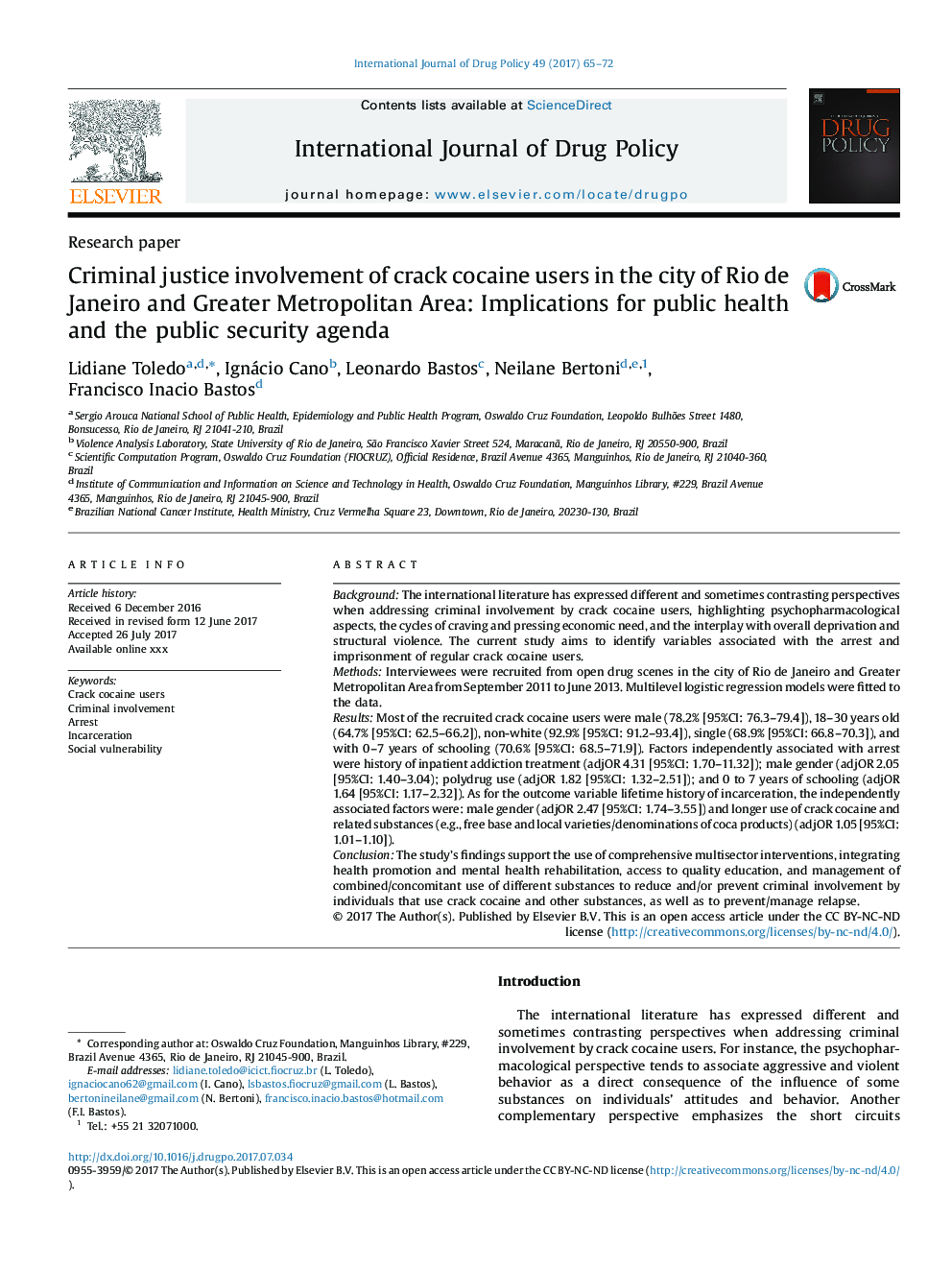| کد مقاله | کد نشریه | سال انتشار | مقاله انگلیسی | نسخه تمام متن |
|---|---|---|---|---|
| 5120704 | 1486256 | 2017 | 8 صفحه PDF | دانلود رایگان |
BackgroundThe international literature has expressed different and sometimes contrasting perspectives when addressing criminal involvement by crack cocaine users, highlighting psychopharmacological aspects, the cycles of craving and pressing economic need, and the interplay with overall deprivation and structural violence. The current study aims to identify variables associated with the arrest and imprisonment of regular crack cocaine users.MethodsInterviewees were recruited from open drug scenes in the city of Rio de Janeiro and Greater Metropolitan Area from September 2011 to June 2013. Multilevel logistic regression models were fitted to the data.ResultsMost of the recruited crack cocaine users were male (78.2% [95%CI: 76.3-79.4]), 18-30 years old (64.7% [95%CI: 62.5-66.2]), non-white (92.9% [95%CI: 91.2-93.4]), single (68.9% [95%CI: 66.8-70.3]), and with 0-7 years of schooling (70.6% [95%CI: 68.5-71.9]). Factors independently associated with arrest were history of inpatient addiction treatment (adjOR 4.31 [95%CI: 1.70-11.32]); male gender (adjOR 2.05 [95%CI: 1.40-3.04); polydrug use (adjOR 1.82 [95%CI: 1.32-2.51]); and 0 to 7 years of schooling (adjOR 1.64 [95%CI: 1.17-2.32]). As for the outcome variable lifetime history of incarceration, the independently associated factors were: male gender (adjOR 2.47 [95%CI: 1.74-3.55]) and longer use of crack cocaine and related substances (e.g., free base and local varieties/denominations of coca products) (adjOR 1.05 [95%CI: 1.01-1.10]).ConclusionThe study's findings support the use of comprehensive multisector interventions, integrating health promotion and mental health rehabilitation, access to quality education, and management of combined/concomitant use of different substances to reduce and/or prevent criminal involvement by individuals that use crack cocaine and other substances, as well as to prevent/manage relapse.
Journal: International Journal of Drug Policy - Volume 49, November 2017, Pages 65-72
